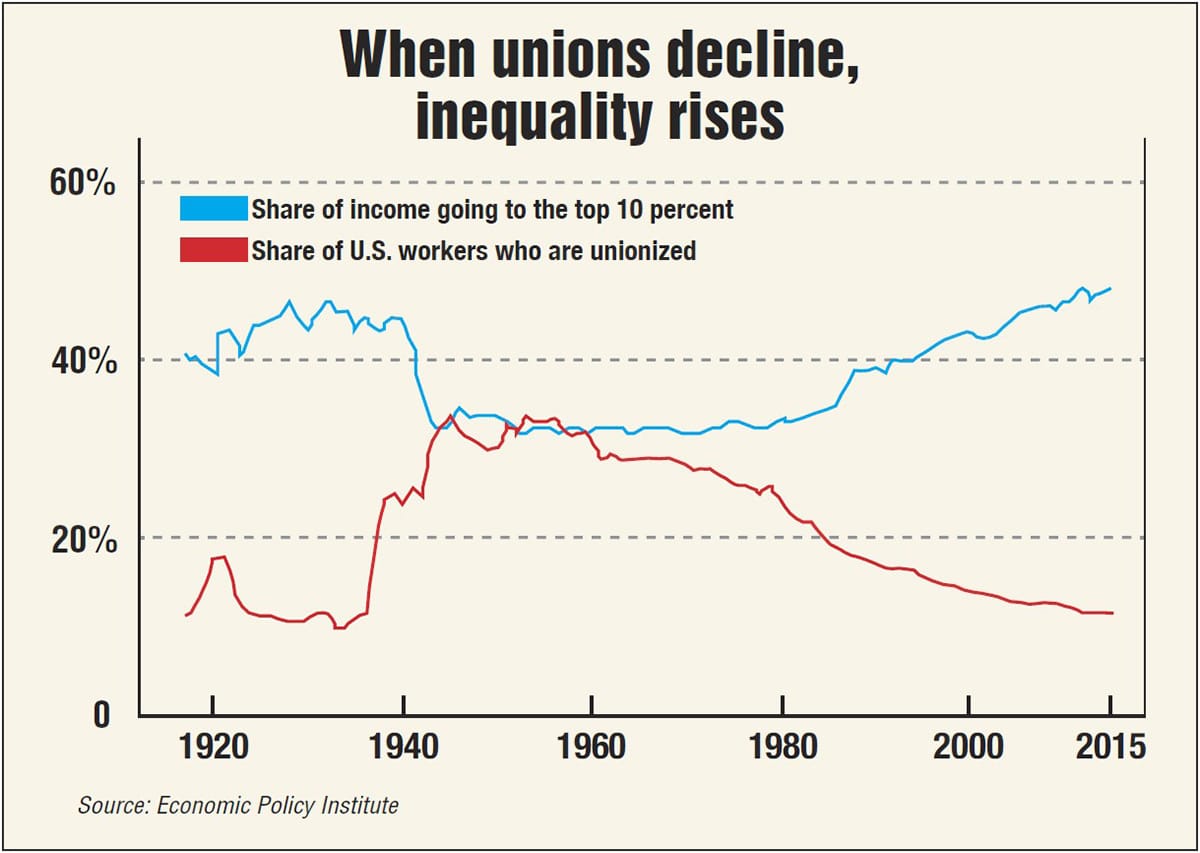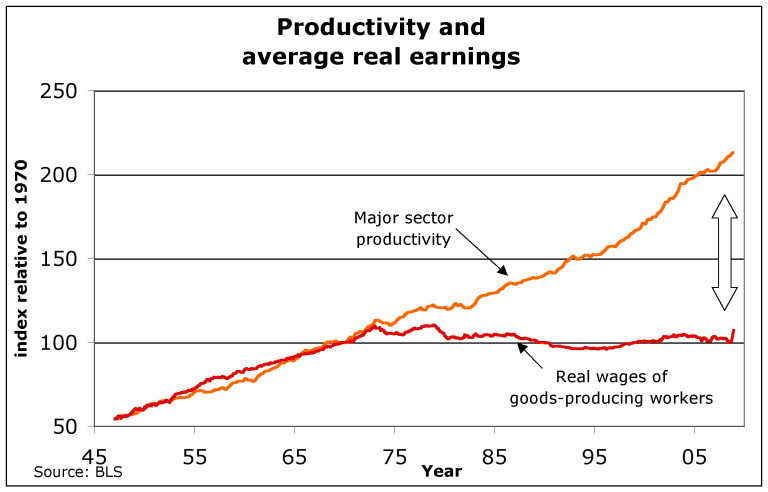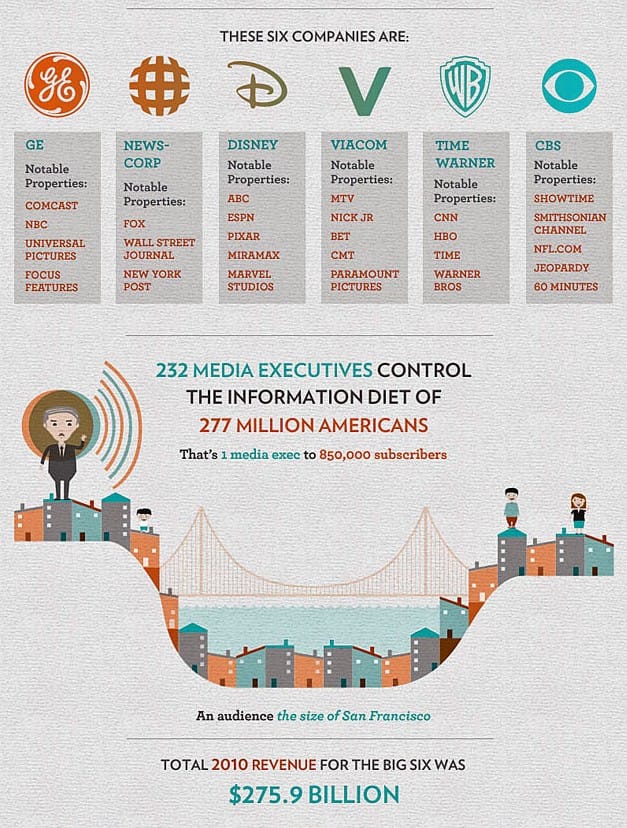Age Discrimination As Yet Another Way to Reduce IT Labor Costs
Executive Summary
- SAP has essentially announced they practice age discrimination.
- How a significant media outlet incorrectly covered SAP and served to support their spin.

Introduction
This article covers how a cover story created by SAP (and other tech companies) is used to engage in age discrimination. The article will provide evidence that the reason for this discrimination is, like other employment initiatives in tech companies, to reduce labor costs.
0ur References
See our references for this article at this link.
Age Discrimination 2.0: Hiring Those Millenials and Younger
It has become quite common to emphasize hiring Millenials and younger. SAP has a program called SAP Young Professionals Program targeted towards hiring youth.

The SAP Young Professionals program was launched by the SAP Training and Development Institute in the Middle East-North Africa (MENA), a region with a high level of youth unemployment, where it can be very difficult for young people to find suitable work despite having excellent educational credentials. The program now runs in 22 countries across the globe, with 2,132 graduates to date. The SAP certifications that the graduates attain are suited to the demand in the local markets for SAP-related skills. Graduates of the program almost always stay within the SAP ecosystem, where they have a competitive edge with their certifications and training on the latest SAP innovations. – SAP
Something that SAP does not mention is that you can bet that SAP got this employee cheap! And this is a big part of the youth movements (and corresponding age discrimination) in tech companies.
Interestingly, I could not find a single program focused on hiring older employees.
In an article published by Bloomberg that reads like SAP paid for it, SAP again makes their interest in hiring younger employees apparent.
Instead, Plattner, 75, wants to shake up SAP once more and make it the employer of choice for the young and hungry. And with just a few years until he hits self-imposed retirement, Plattner is showing no sign of slow-walking the rejuvenation in his quest to protect a legacy of disruptive software mogul.
Surprisingly, there is some pushback quoted in the article.
The Union Voice on SAP from Germany
Labor representatives are complaining that SAP is trying to squeeze out expensive, older employees who helped drive SAP’s early success. “Hiring more young people is good and right,” said Eberhard Schick, a member of SAP‘s workers’ council, who joined the company in 1997. “But you shouldn’t forget about the seasoned employees — they deserve a career perspective and training opportunities.”
Interestingly, there is a labor representative in Germany. If this were the US, this quote would not exist, because there is no labor representative for SAP in the US. Most Americans that work in IT don’t have any idea what the history of labor and labor versus corporations actually is. Unions, not corporations fought for a 40-hour work week (corporations opposed it). Unions, not corporations fought against child factory labor (again corporation supported child labor). Child labor is still a considerable problem internationally. It is only not much less of a problem in the US, Canada, Western Europe, Australia/NZ because corporations were fought against to make the practice illegal.
*While researching this article I was shocked to find that child labor has crept back into the US through migrant farm labor.
But child labor doesn’t happen only abroad. In the United States, labor laws allow children to work in agriculture at much younger ages, for longer hours, and under more hazardous conditions than children in other industries. This means that a 12-year old can work 50 or 60 hours a week in fields, exposed to toxic pesticides and extreme heat, and it’s legal. – Human Rights Watch
The US prefers if employees have no voice, with only 12% of the population belonging to a union.

There is a direct relationship between unionization and income equality in society. In the US, executives have taken the money that would have gone to workers if the unionization were higher and paid much of it in executive compensation. For those who think unions lead to communism, the US was a capitalist society back in 1960, at the height of unions. And it was a far more equal and more sustainable society. Furthermore, nearly every national health statistic (health care outcomes, % of people in prison, infant mortality rates, etc.. was better in 1960 than today. Wealthy executives prefer that people focus on education rather than on unions.
Why is this?
Because unions are effective in raising wages overall, while education is not.
Need evidence?

In the US, wages stopped growing in roughly 1970, even though productivity rapidly increased. Why? Each year, the population became more educated. However, education could not counteract the effect of the decline in unionization, significantly reducing workers’ bargaining power. If the US had the same education level as in 1970 (far lower) but had maintained its unions, it appears that as wages were tracking productivity until 1970, US wages could be twice what they are now. Instead, all of that productivity was placed into the pockets of the wealthy. Major financial interests do not want this graphic seen or understood, so they focus on ancillary issues, as we cover in the article ” Why the Gender Pay Gap is Discussed But Not Overall Pay.
Returning to the quote from the labor representative from Germany, Bloomberg had no comment and moved on to the next topic.
Plattner’s alma mater, IBM, demonstrates that change is arguably less painful than failure to act. IBM faces several lawsuits accusing it of firing older workers, with one former vice president putting the number of employees let go in the last few years at 100,000, a figure that IBM disputes.
What is this confused paragraph supposed to imply? IBM, as we covered in How IBM Became a Hollowed Out Company, is not a company that anyone should be emulating.
It is a company continuously shedding its domestic employees to hire in India and has a horrible internal culture. The message boards around IBM illustrate anger from former employees and disgust at what IBM has become. IBM, once a genuinely innovative company, is now just a fleecing operation that pretends it can do things it can’t do. IBM has been shedding experienced employees for at least two decades, but how has this improved IBM? If anything, this is at least partial evidence not to do this rather than proof that it should be done. The entire paragraph quote from Bloomberg above is illogical. The only evidence presented by the Bloomberg author that IBM has benefited from shedding more experienced workers is that they have received lawsuits for age discrimination. Is that a good thing? Is that a reason to do something because you get sued for doing it?
How many employees has IBM left in the past few years? If IBM disputes the 100,000 figure, they should provide the figure they have let go of. Years ago, IBM stopped reporting its number of employees per country because it could hide how much they are now increasingly a company based in India.
SAP’s Moving to the Cloud and Needs Different (Read: Younger) Employees?
The hard choices facing SAP are emblematic of the industry’s shift toward selling products in the cloud, which allows companies to implement new software faster and cheaper than products that need to be installed at a customer’s own data center. It’s a move that will require fewer people, and with different skill sets than many of those now at SAP.
The idea that SAP is moving to the cloud is simply false. SAP is moving to mark up the cloud services of other cloud providers, as we covered in the article How to Understand SAP’s Upcharge as a Service Cloud, and massively upcharging the customer for “going through SAP.” Therefore, the rest of the paragraph is also false. SAP is not moving to younger employees because their delivery mechanism is changing. SAP has an 85% margin on its support. Most of the margins are in support as covered in the article The Giant Margins for SAP and Oracle Support, and SAP has outsourced most of its support staff to India, precisely to obtain these margins. The fact is that SAP’s margins have virtually nothing to do with the cloud discussions; it is the overseas workers that allow SAP to have the margins that it does.
Notice that there is no analysis of this in the article. The Bloomberg author repeats whatever SAP tells him. This perpetuates several falsehoods:
- a.) that SAP gets significant revenue from the cloud it operates (untrue as it marks up other cloud service providers) and…
- b.) that it is warranted in shedding older workers because it needs to improve its margin to what it was in the 2011 time period.
“Transitions like these cause disruption and take time,’’ said Anurag Rana, an analyst at Bloomberg Intelligence. “But SAP has a portfolio of good products that should help the company stay relevant in the long term.”
Has Anurag ever used an SAP product? If so, he would know this statement is not true. SAP has a very well-known ERP system, but the system is quite old at this point, and SAP’s new S/4HANA application follow-on to ECC is a regression in many ways. Secondly, companies that purchased ECC faced enormous costs and often purchased other SAP products like APO, BW, PLM, and SRM, that is, genuinely horrible products. But again, Anurag works for Bloomberg, so he has a specific script to read if he intends to keep working there. Most IT analysts have never touched an SAP application, but this does not stop them from making highly confident statements about these topics.
Age Discrimination as Necessary Because of German Eating Non-Innovative Pretzel Eaters?
Hasso makes a curious observation about German culture.
German complacency has long been one of Plattner’s pet peeves. As far back as 2006, Plattner vented his anger by lamenting how Germans lack the drive to be successful and risk being eclipsed by more innovative countries including the U.S., India and China. “We’re happy sitting in front of a television, munching on pretzels,” Plattner said at the time. “Some things in this country are beyond fossil.”
Eating pretzels and watching television has not seemed to limit Germany’s ability to be innovative and historically innovative in areas ranging from chemicals to automobiles to specialty manufacturing. I wonder if Hasso thinks innovation only occurs in software. If we measure Germany’s innovation in software, it is weak — but this is primarily because of SAP’s lack of innovation. outside of SAP, Germany’s software industry is small, so SAP is the cause of the innovation problem in Germany software industry.
This is also expressed by Ahmed Azmi.
Just because SAP is lacking innovation does not mean Germany is the same. Germany has been leading the world in so many fields for so long. The fact is that Germany is trailing in software BECAUSE of SAP.
The Logical and Profit Basis in Age Discrimination
Ageism has an entirely logical basis. Companies are looking for passive employees who will go along with whatever the company wants. Older employees are less likely to go with the program. As companies in the US have become more hierarchical, and the compensation paid by US companies to executives has dramatically exceeded the compensation paid to workers, there is less interest on the part of companies to accept any critical thinking on the part of employees.
Looking past what amounts to a bunch of false information, it is quite apparent where the money that is wrung out of employees goes. This money is shifted upwards.
In past days I thought that ageism, at least in technology, was primarily based upon skills. That is generally the presentation by companies, and this presentation influenced me. However, I have since learned to question anything billionaires propose as it is typically entirely backward engineered for what makes them the most money.
Seeing how companies function, it is clearly about finding people who will toe the line. It’s disturbing how much work is done by the under-30 set in companies. They are super motivated, but it is also inefficient because younger people make a lot of errors, and it isn’t easy to know what is true at that age. It took me a lot of time to develop specific skills, and I did not have them when I was 30. I was a lot easier to trick at 30 — I have been a sceptic most my life, I keep figuring out new things all the time (as I quickly approach 50 this September). There are pathways I would have followed just five years ago, that I would never follow now.
Another bias is that more senior positions are often just sales positions. SAP has a ton of VPs, and most of these VPs are just making sales or engaging in some Game of Thrones political intrigue. And if you don’t want to make sales, most senior positions are unavailable. You can work based on your skills when you are younger, but it becomes more about being a political animal as you age. You can’t be simply a technical problem solver; there are a few positions for this, but most have a political component.
Unsurprisingly, companies do not discuss the logic for hiring passive and humble workers, even though this is at least part of the motivation for hiring younger workers and workers who lack citizenship, such as the enormously abused H1-B program. Again, there is not a single company that will discuss their motivation for hiring H1-B workers are based upon lowering wages, even though it is firmly established that H1-B workers not only work for lower wages, but they also reduce the wages of the US domestic IT workers. Here again, the media is complicit in expressing every single H1-B visa holder as “highly skilled,” even though most H1-B visa holders do not meet the description. Most are moderately skilled, not highly skilled. The Indian media, much like the US media, is continually referring to H1-B visa holders as highly skilled without any thinking or debate on the topic.
The Bait and Switch in Later Career Employment
There is a highly dishonest aspect to shedding older or more seasoned workers. A primary reason that younger workers make an effort to get ahead and to get skills is that they believe they will be able to have a long career from doing so. However, shedding them as they become more expensive and less compliant creates a bait and switch for young employees. That is, companies that shed these workers once they reach their “used-by date” don’t deserve the motivation of the younger workers they are hiring in the first place. For this reason, it should be better publicized that these firms view their employees as disposable parts to be discarded long before their effectiveness wanes. And as unionization has declined so much in the US, companies can get away with borrowing and discarding workers. They can count on media entities — owned by other billionaires to discuss how this supports “real innovation.”
And younger workers who are hired because of age discrimination should remember something. People tend to age.
H1-Bs and Age Discrimination
Age discrimination is being enabled with the H1-B program, which encourages companies to displace US workers.
Another dirty little secret in all this is that the H-1B program is an enabler of rampant age discrimination in the tech industry. Age is actually one of the core issues in H-1B. Mind you, we are talking about age 35 as being “old” here, not 55. Almost all the H-1Bs are young, and younger is cheaper. And young H-1Bs are even cheaper than young Americans. – Huffington Post
Conclusion
Age discrimination is prevalent in IT because IT companies believe it is profit-maximizing.
Age discrimination replaces workers who will be far more likely to question authority and how they have the experience to contradict the false information provided to them by the company with those who lack the expertise to do so. The graphics presented in this article demonstrate that companies have little interest in increasing workers’ living standards and are on a constant quest to bring in non-citizen workers, shed older workers, and shed workers in the developed world. Then, exchange them for workers in the undeveloped world (while still having access to the same customers in the developed world). For this to be effective, companies need complicit media entities, which nearly all major media outlets are. This prevents these questions from being asked and allows their propaganda to be repeated through their coverage. IT media not only does not discuss what is occurring but serves as a megaphone for the specific programs that help reduce wages for workers.

The significant media entities don’t even have to be convinced by large companies like SAP to repeat false information to their readers. Those who own major media outlets are themselves elite entities. Bloomberg is owned by Michael Bloomberg, who has a net worth of $55 billion, making him the 6th most wealthy person in the US. Hasso Plattner is worth $14 billion. They already agree on hiding the information about how companies manipulate labor even if they have never met in person. By the time Trump leaves office, the US will have unprecedented media consolidation as his FCC is repealing the restrictions on vertical integration in media.
The 2016 US Democratic Primary, which pitted Hillary Clinton against Bernie Sanders, was rigged by both the DNC and by the opinion-shaping media. This is happening again as the 2020 race heats up. Why? The media is owned by billionaires who will lose if Bernie Sanders is elected. Therefore, they use their control over media in the political sphere the same way they use their control over media in the business sphere — to present only what they want to be accurate and what they want to be discussed. The options they want to be selected. This topic was barely covered in the DNC-friendly networks (CNN, MSNBC) and could primarily be found on the opposition network (Fox News) and RT (funded by Russia). This video is by Tulsi Gabbart, who stepped down from the DNC in opposition to this rigging.
This is the outcome of media consolidation.
There is no difference between the US media that covers politics and the US media that includes IT and business; the same entities control it and reflects the same elite opinion.
The Overal Trend
This article has focused on SAP, but this is only because Brightwork focuses on SAP, and we quickly happened to find sources and articles for SAP. In reality, Oracle, Deloitte, and many other companies in IT are doing the same thing as SAP. This is an industry-wide movement to help these companies decrease their cost of labor and to produce a cover story to distract from what they are doing and the reasons they are doing it.